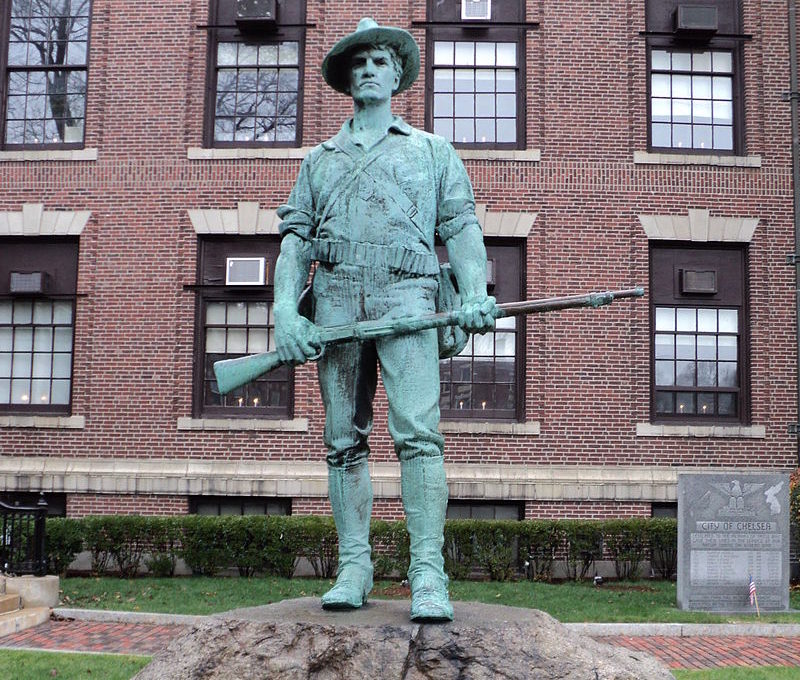The placard on the monument states” This Memorial Erected by the Walter I. Chadbourne Camp No. 24 U.S.W.V. in Honor of the Men of Chelsea who served in the 1898 – Spanish–American War – 1902
Dedicated November 11, 1934
Volunteers all by their service and their lives they gave the blessings of liberty and justice to the oppressed people of Cuba and the Philippines”
Additionally, the placard lists the names of the citizens of Chelsea that were members of the 1st Mass. Heavy Artillery H Battery U.S. Volunteers, members of the U.S. Army, U.S. Navy, Marine Corp, and identifies that Corp. Daniel J. Dempsey was killed in action July 1, 1898 at the Battle of El Caney.
The Hiker is a statue created by Theo Alice Ruggles Kitson. It commemorates the American soldiers who fought in the Spanish–American War, the Boxer Rebellion and the Philippine–American War. The first version of it was made for the University of Minnesota in 1906, but at least 50 copies were made, and were erected widely across the United States.
“The Hiker depicts a hero stripped of his parade uniform and shown as a soldier reacting to the challenges of the battlefield.” When she created The Hiker, Kitson already had a reputation for sculpting war memorial statues. For the title of her work, Kitson used the term that American soldiers in both the Spanish–American War and the Philippine–American War gave themselves: “hikers”. Leonard Sefing, Jr., a Spanish–American War veteran from Allentown, Pennsylvania, was selected as the model for the statue after a photograph of him was entered into a national contest. The original statue was unveiled at the University of Minnesota on Memorial Day, 1906. The statue stands in front of the armory at 15 Church Street. Also known as the Student Soldier Memorial, it is a monument to the 218 University of Minnesota students who served in the Spanish–American War.The statue is 9 feet (2.7 m) tall and stands on a 6-foot (1.8 m) granite base, depicting a soldier clad in a period uniform with a campaign hat and a Krag-Jørgensen rifle. Today this statue, now missing the muzzle of the rifle,[6] is popularly known as Iron Mike.



